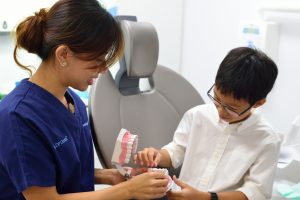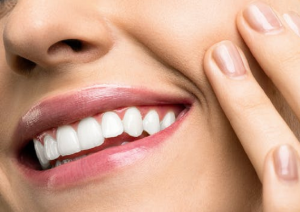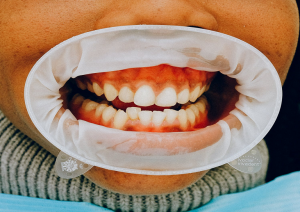Blog

Regular dental visits (at least twice a year) are ideal to ensure that your child not only remains cavity free, receives adequate hygiene instructions to maintain healthy gums, but is also monitored for their dental development especially as they begin to grow permanent teeth. Early detection of dental problems also typically translates to a more comfortable and affordable treatment for your child.
It is generally recommended for parents to bring their child in for his/her first dental visit at around the age of 1-2 when he/she would be close to (or already) having the full set of milk teeth (20 in total). Getting an early start in regular dental visits not only establishes healthy lifetime habits, but also minimizes dental fear in your child. The first visit is usually kept fun, non-threatening and interactive, with the main focus being to acquaint your child with the dental team as well as sights and sounds of the tools and equipment.
Tips on preparing your child for the first dental visit:
- Choose an appointment time when your child is fresh and alert – usually mornings
- Talk to your child about the importance of healthy teeth and oral hygiene early and set an example by having them observe you brushing and flossing properly.
- Try ‘playing dentist’ with your child, taking turns to look into each other’s mouths using toothbrushes and flashlights to count teeth to build understanding of the dental examination process.
- Explain to your child what the dentist would do and reassure him/her that you would be present throughout the whole visit. Have your child voice out any fears and provide encouragement. Bring along his/her favourite toy for that extra security if needed.
- Consider reading your child a book about a character having a pleasant dental visit – your dental clinic may have one available.
- Take note of not passing on any personal anxieties or fears to your child as many parents who are averse to dental visits themselves may transmit negative messages to their children. Avoid using negative words such as ‘pain’, ‘needles’ or ‘drill’ to maintain positivity.
What should you expect at the dentist?
The dentist will carry out a gentle examination of your child’s oral conditions, followed by the taking of some photographs and x-rays if necessary – for instance, to diagnose dental decay or to identify developmental abnormalities. This will be followed by comprehensive discussion on findings, need for further treatment, as well as advice on proper dietary and tooth-care habits with you to guide your child’s dental health in the right direction.
Treatment may range from the more basic polishing (and scaling) of your child’s teeth, fillings for small-moderate sized cavities, to more complex procedures such as silver crowns and root canal treatments for larger decays. If the alignment of your child’s teeth and jaws is a concern, teeth straightening options may also be considered.
For children with more extensive dental needs, specialist referral or even indication for treatment under General Anaesthesia may be advised, especially if they are very young, anxious and/or uncooperative in the chair.
We also recommend bringing along your little one’s favourite books, videos, and apps to make their first trip to the dentist a fun one.
Niloufer Perera
|
March 1, 2021

Does breathing affect your body weight
Dr. Yue Weng Cheu
|
March 1, 2021

Tooth decay and common dental problems to look out for
Dr. Yue Weng Cheu
|
March 1, 2021

All you need to know about Periodontal (Gum) Disease
Dr. Yue Weng Cheu
|
March 1, 2021
